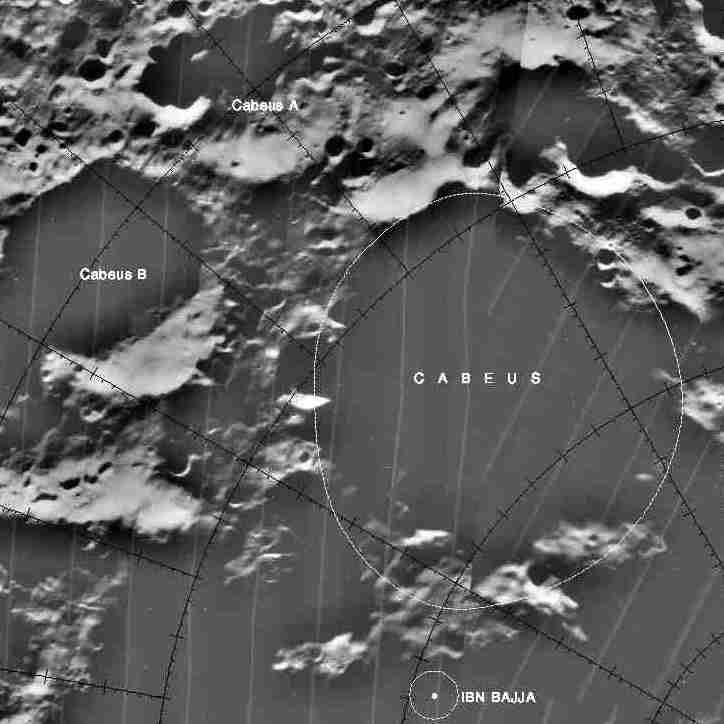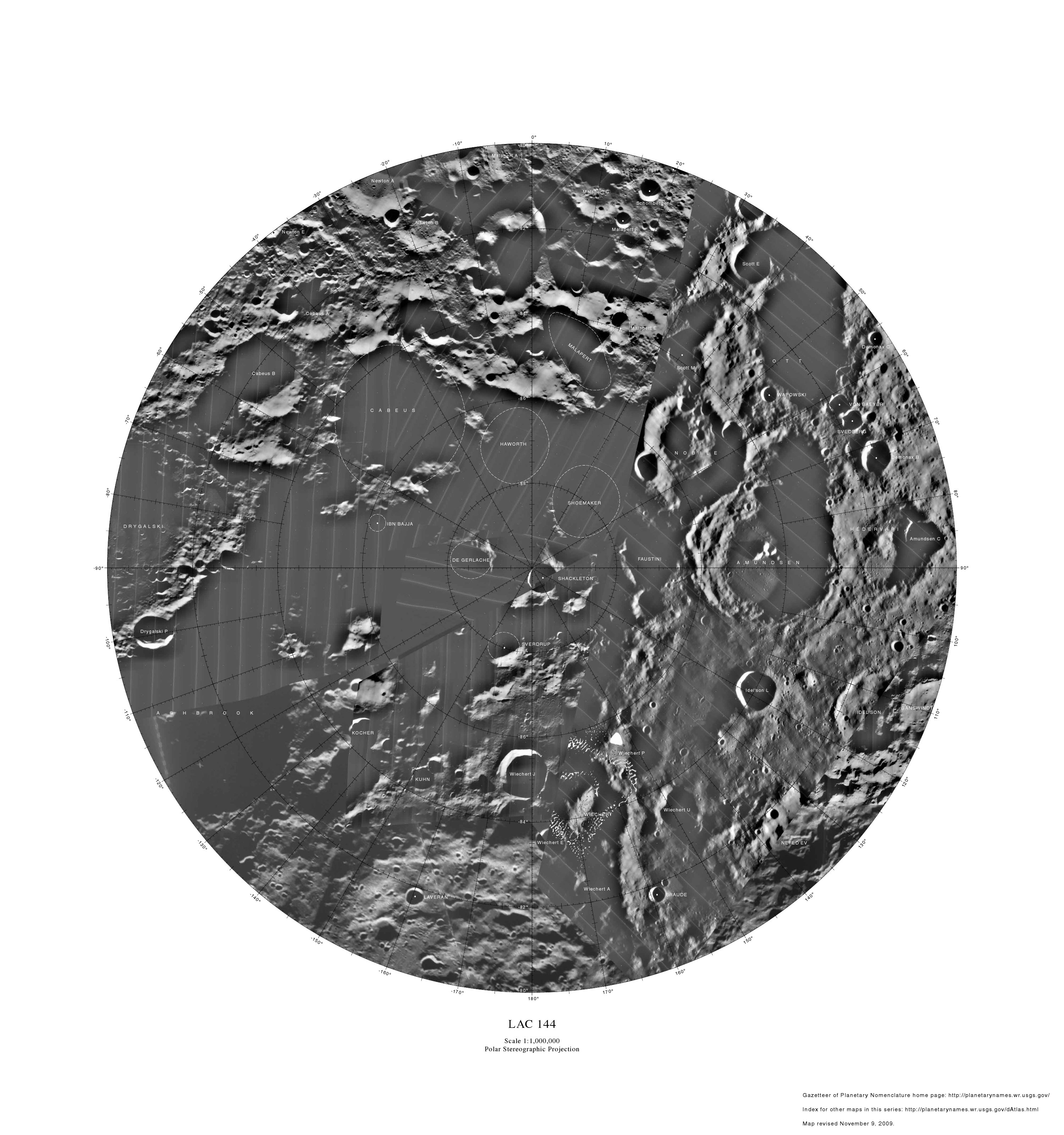|
Cabeus
Cabeus is a lunar impact crater that is located about from the south pole of the Moon. At this location the crater is seen obliquely from Earth, and it is almost perpetually in deep shadow due to lack of sunlight. Hence, not much detail can be seen of this crater, even from orbit. Through a telescope, this crater appears near the southern limb of the Moon, to the west of the crater Malapert and to the south-southwest of Newton. Description The crater name ''Cabeus'' first appeared in the 1651 work ''Almagestum Novum'' by Giovanni Riccioli, who named it after Niccolò Cabeo. However, the position of the Cabeus crater was in the location later assigned to Newton crater.Whitaker (1999:61, 211) The official name and location for this crater was adopted by the IAU Commission 17, as established in the 1935 work ''Named Lunar Formations'' by Mary A. Blagg and Karl Müller. This crater is a worn formation that has been eroded by subsequent impacts. The rim is eroded and uneve ... [...More Info...] [...Related Items...] OR: [Wikipedia] [Google] [Baidu] |
LCROSS Centaur Impact Flash
The Lunar Crater Observation and Sensing Satellite (LCROSS) was a robotic spacecraft operated by NASA. The mission was conceived as a low-cost means of determining the nature of hydrogen detected at the polar regions of the Moon. Launched immediately after discovery of lunar water by Chandrayaan-1, the main LCROSS mission objective was to further explore the presence of water in the form of ice in a permanently shadowed crater near a lunar polar region. It was successful in confirming water in the southern lunar crater Cabeus (crater), Cabeus. It was launched together with the Lunar Reconnaissance Orbiter (LRO) on June 18, 2009, as part of the shared Lunar Precursor Robotic Program, the first United States, American mission to the Moon in over ten years. LCROSS was designed to collect and relay data from the impact and debris plume resulting from the launch vehicle's spent Centaur (rocket stage), Centaur upper stage (and data-collecting Shepherding Spacecraft) striking the crate ... [...More Info...] [...Related Items...] OR: [Wikipedia] [Google] [Baidu] |
Lunar South Pole
The lunar south pole is the southernmost point on the Moon. It is of interest to scientists because of the lunar water, occurrence of water ice in Crater of eternal darkness, permanently shadowed areas around it. The lunar south pole region features craters that are unique in that the near-constant sunlight does not reach their interior. Such craters are cold trap (astronomy), cold traps that contain fossil records of hydrogen, water ice, and other volatiles dating from the Formation and evolution of the Solar System, early Solar System. In contrast, the lunar north pole region exhibits a much lower quantity of similarly sheltered craters. Geography The lunar south pole is located on the center of the polar Antarctic Circle (80°S to 90°S).Lunar South Pole. NASA. 2017. Accessed on 16 July 20 ... [...More Info...] [...Related Items...] OR: [Wikipedia] [Google] [Baidu] |
Crater Of Eternal Darkness
A permanently shadowed crater is a depression on a body in the Solar System within which lies a point that is always in darkness. As of 2019, there are 324 known permanently shadowed regions on the Moon. Such regions also exist on Mercury (planet), Mercury and Ceres (dwarf planet), Ceres. Location Such a crater must be located at high latitude (close to a Poles of astronomical bodies, pole) and be on a body with very small axial tilt. The Moon has an axial tilt of about 1.5°; Mercury, 0.03°;Planetary Fact Sheets at http://nssdc.gsfc.nasa.gov and Ceres, about 4°. On the Moon, permanent shadow can exist at latitudes as low as 58°; approximately 50 permanently shadowed regions exist in the 58°- 65° latitude range for both lunar hemispheres. The cumulative area of permanently shad ... [...More Info...] [...Related Items...] OR: [Wikipedia] [Google] [Baidu] |
Niccolò Cabeo
Niccolò Cabeo, (also known as Nicolaus Cabeus; February 26, 1586 – June 30, 1650) was an Italian Jesuit philosopher, theologian, engineer and mathematician. Biography He was born in Ferrara in 1586, and was educated at the Jesuit college in Parma beginning in 1602. He passed the next two years in Padua and spent 1606–07 studying in Piacenza before completing three years (1607–10) of study in philosophy at Parma. He spent another four years (1612–1616) studying theology in Parma and another year’s apprenticeship at Mantua. He then taught theology and mathematics in Parma, then in 1622 he became a preacher. For a time he received patronage of the Duchy of Mantua, Dukes of Mantua and the house of Este, Este in Ferrara. During this time he was involved in hydraulics projects. He would later return to teach mathematics again in Genoa, the city where he would die in 1650. He is noted for his contributions to physics experiments and observations. He observed ... [...More Info...] [...Related Items...] OR: [Wikipedia] [Google] [Baidu] |
Lunar Reconnaissance Orbiter
The Lunar Reconnaissance Orbiter (LRO) is a NASA robotic spacecraft currently orbiting the Moon in an eccentric Polar orbit, polar mapping orbit. Data collected by LRO have been described as essential for planning NASA's future human and robotic missions to the Moon. Its detailed mapping program is identifying safe landing sites, locating potential resources on the Moon, characterizing the radiation environment, and demonstrating new technologies. Launched on June 18, 2009, in conjunction with the LCROSS, Lunar Crater Observation and Sensing Satellite (LCROSS), as the vanguard of NASA's Lunar Precursor Robotic Program, LRO was the first United States mission to the Moon in over ten years. LRO and LCROSS were launched as part of the United States's Vision for Space Exploration program. The probe has made a 3-D map of the Moon's surface at 100-meter resolution and 98.2% coverage (excluding polar areas in deep shadow), including 0.5-meter resolution images of Apollo landing sites. ... [...More Info...] [...Related Items...] OR: [Wikipedia] [Google] [Baidu] |
Malapert (crater)
Malapert is a Lunar craters, lunar impact crater that lies near the south pole of the Moon, named for 17th century astronomer Charles Malapert. From the Earth this formation is viewed from the side, limiting the amount of detail that can be seen. The crater is also illuminated at very low angles, so that parts of the interior remain in almost crater of eternal darkness, constant darkness. The nearest craters of note are Cabeus (crater), Cabeus to the west, and Shoemaker (lunar crater), Shoemaker to the south-southeast and nearer to the south pole of the Moon. The rim of Malapert forms an irregular ring of peaks around the interior floor. The western side of the rim is overlain by what appear to be impact craters. There are also small craters overlying the southeastern rim. Much of the interior and details of the rim remain hidden by shadows. The southwestern part of the rim forms part of a 5-km-high rise in the surface that has been unofficially designated Malapert Mountain. T ... [...More Info...] [...Related Items...] OR: [Wikipedia] [Google] [Baidu] |
Moon
The Moon is Earth's only natural satellite. It Orbit of the Moon, orbits around Earth at Lunar distance, an average distance of (; about 30 times Earth diameter, Earth's diameter). The Moon rotation, rotates, with a rotation period (lunar day) that is synchronized to its orbital period (Lunar month#Synodic month, lunar month) of 29.5 Earth days. This is the product of Earth's gravitation having tidal forces, tidally pulled on the Moon until one part of it stopped rotating away from the near side of the Moon, near side, making always the same lunar surface face Earth. Conversley, the gravitational pull of the Moon, on Earth, is the main driver of Earth's tides. In geophysical definition of planet, geophysical terms, the Moon is a planetary-mass object or satellite planet. Its mass is 1.2% that of the Earth, and its diameter is , roughly one-quarter of Earth's (about as wide as the contiguous United States). Within the Solar System, it is the List of Solar System objects by ... [...More Info...] [...Related Items...] OR: [Wikipedia] [Google] [Baidu] |
Diviner
Diviner, also referred to as the Diviner Lunar Radiometer Experiment (DLRE), is an infrared radiometer aboard NASA's Lunar Reconnaissance Orbiter, part of the Lunar Precursor Robotic Program which is studying the Moon. It has been used to create temperature maps of the Moon's surface, as well as detect ice deposits and surface composition. The instrument has measured temperatures of in a crater at the northern pole and in craters at the southern pole. On 9 October 2009, the Diviner team announced the detection of a hot spot on the Moon at the location of the LCROSS spacecraft impact site. References {{Reflist External links Diviner Lunar Radiometer Experimentat UCLA The University of California, Los Angeles (UCLA) is a public land-grant research university in Los Angeles, California, United States. Its academic roots were established in 1881 as a normal school then known as the southern branch of the C ... Lunar Reconnaissance Orbiter Spacecraft instruments Radiom ... [...More Info...] [...Related Items...] OR: [Wikipedia] [Google] [Baidu] |
NASA
The National Aeronautics and Space Administration (NASA ) is an independent agencies of the United States government, independent agency of the federal government of the United States, US federal government responsible for the United States's civil list of government space agencies, space program, aeronautics research and outer space, space research. National Aeronautics and Space Act, Established in 1958, it succeeded the National Advisory Committee for Aeronautics (NACA) to give the American space development effort a distinct civilian orientation, emphasizing peaceful applications in space science. It has since led most of America's space exploration programs, including Project Mercury, Project Gemini, the 1968–1972 Apollo program missions, the Skylab space station, and the Space Shuttle. Currently, NASA supports the International Space Station (ISS) along with the Commercial Crew Program and oversees the development of the Orion (spacecraft), Orion spacecraft and the Sp ... [...More Info...] [...Related Items...] OR: [Wikipedia] [Google] [Baidu] |






